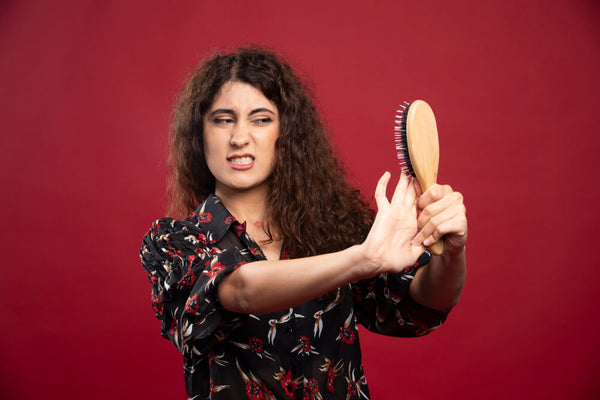Let me tell you about Danielle, a client who'd basically given up on her edges. After years of tight braids and weaves, that area above her temples was smooth as a baby's bottom. She'd tried PRP twice with minimal results. "My follicles are just dead," she told me during her consultation.
But here's what most people don't understand: most "dead" follicles aren't actually dead—they're dormant. They've stopped responding to the growth signals your body is sending. It's like they've put in earplugs and closed their eyes.
Exosome therapy is the treatment that finally removes those earplugs.
How This is Different From Anything You've Tried
Think of your previous hair treatments like this:
-
Minoxidil: Yelling at your follicles from across the room.
-
PRP: Sending a general delivery package of nutrients.
-
Exosomes: Hand-delivering specific blueprints directly to each follicle.
Where other treatments provide fuel, exosomes provide the exact instructions for what to do with that fuel. They contain over 300 growth factors and signaling molecules that tell your follicles: "Stop being inflamed. Start building new hair. Increase blood flow right now."

The PRP vs. Exosome Reality Check
I often get asked: "Are exosomes better than PRP?" Here's the raw truth: PRP uses YOUR aging growth factors - which might be depleted if you've been stressed, nutrient-deficient, or dealing with chronic inflammation.
Exosomes use optimized, youthful signaling - they're like getting growth instructions from the healthiest version of yourself.
Think of it this way: PRP gives your follicles groceries. Exosomes give them the recipe AND the chef.
Why This Actually Works on "Hopeless" Cases
For Scar Tissue (CCCA):
Scar tissue isn't just a physical barrier—it creates a biological environment that tells follicles to stay dormant. Exosomes can change that environment, literally convincing scar tissue to release its grip on your follicles.
When PRP Disappoints:
If PRP gave you minimal results, it's often because your follicles didn't know what to do with the nutrients. Exosomes provide these missing instructions to help hair absorb more nutrients.
For Stubborn Inflammation:
Chronic scalp inflammation suppresses any growth signals. Exosomes decrease such inflammations so your follicles can grow again properly.
Our Approach: We Maximize Your Results
Generally, exosomes yield the most effective results if your scalp is well prepped before the procedure:
Before Your Treatment:
We optimize your scalp environment with anti-inflammatory protocols and medical-grade topicals. This gives the exosomes a clean slate to work with.
During Your Treatment:
We use micro-injection techniques that make sure that the exosomes reach the deepest part of your follicles because that is where the regeneration actually happens.
After Your Treatment:
We support the growth process with nutraceuticals and low-level laser therapy. This keeps the growth signals strong between your sessions.

The Real Timeline (No Fairy Tales)
Weeks 1-4: Reduced shedding. Decreased inflammation.
Months 1-3: Tiny colorless "peach fuzz" in bald areas.
Months 3-6: Hairs thicken and become dark and visible.
Months 6-12: Hair gets denser with better coverage.
This isn't an overnight miracle—it's a biological process that follows hair growth cycles. But for women who've seen nothing happen for years, those first colorless hairs feel like winning the lottery.
Who Actually Sees the Best Results?
The ideal exosome candidate:
-
Has early to moderate hair loss (before extensive scarring)
-
Has seen some improvement with other treatments
-
Is committed to the 3-6 month process
-
Addresses underlying health issues simultaneously
The challenging candidate:
-
Has completely smooth, shiny bald areas for 5+ years
-
Expects one treatment to solve everything
-
Isn't willing to change the styling habits that caused the problem
The Investment That Actually Pays Off
Yes, exosome therapy costs more than other treatments. But consider what you've already spent on products that didn't work or the treatments that gave minimal results or on styling costs to hide the damage.
When you factor in what successful regrowth is actually worth to your confidence and quality of life, most women find it's the best investment they've ever made in their hair.
Ready to See If Your Follicles Are Ready to Listen?
If you're tired of treatments that promise the world but deliver little, book your Hair Therapy Evaluation with us today for just $99 and come talk to us about exosomes. Let's see if your follicles are just waiting for the right instructions.














